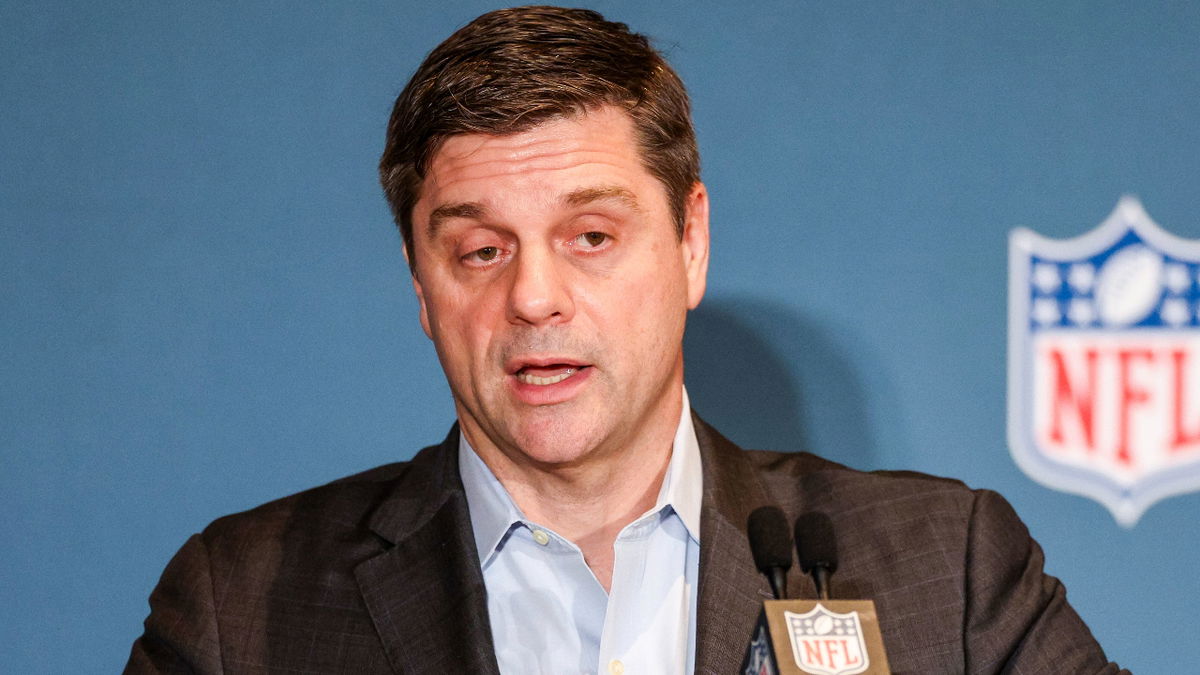
Imago
Brian Rolapp, new CEO of PGA Tour

Imago
Brian Rolapp, new CEO of PGA Tour
The PGA Tour entered 2025 on uncertain footing after a turbulent year of sponsor exits that cast a shadow over its restructured event model. High-profile title sponsors such as Wells Fargo, Farmers Insurance, Shriners Children’s Hospital, and Honda all announced they would be ending long-standing deals, citing rising costs and shifting business priorities. The Wells Fargo Championship—upgraded to Signature Event status—saw its purse balloon to $20 million, with Wells Fargo ultimately declining to cover the new financial demands. “We are proud of our history with the event, but we will not continue as a Signature Event partner,” the bank said in a 2024 statement.
Watch What’s Trending Now!
Farmers Insurance, a fixture in San Diego since 2010, confirmed it would depart after the 2026 season as part of a broader cost-cutting strategy. Honda ended its 42-year sponsorship of the Palm Beach Gardens event after 2023, and Shriners Children’s will exit its Las Vegas partnership after the 2024 tournament. With full-field event sponsorships now costing upwards of $13–15 million annually, and Signature Events even more, some longtime partners simply stepped away. Tour executives have acknowledged the growing strain on sponsors amid elevated purses and shrinking fields—part of the “elite product” overhaul initiated post-2022.
In the midst of this sponsorship reset, the Tour has secured a fresh title partner for one of its newest fall events, days after Brian Rolapp took over as the new CEO. As reported by Josh Carpenter via X, the tournament formerly known as the Black Desert Championship, which debuted in 2024, is now called the Bank of Utah Championship, beginning in 2025. Bank of Utah, a privately held institution with $3 billion in assets, signed a multi-year title sponsorship through 2027. While financial details were not officially disclosed, fall-event sponsorships are generally estimated to cost $11–13 million per year.
ADVERTISEMENT
New title sponsor for the PGA Tour’s fall tournament in Utah, formerly (for one year) the Black Desert Championship.
Now called the Bank of Utah Championship https://t.co/5nghUgNXk5
— Josh Carpenter (@JoshACarpenter) July 1, 2025
The decision follows a deliberate first-year strategy by Black Desert Resort to run the 2024 event without a sponsor to establish branding and draw media attention. “We wanted to see Black Desert as the Black Desert Championship and make connections,” said managing partner Patrick Manning. For 2025 and beyond, organizers prioritized a locally relevant sponsor, landing on the Ogden-based bank as a natural fit. The Bank of Utah Championship gives the institution visibility in southern Utah, where it currently has no branches, and provides the Tour with much-needed stability in the fall portion of its schedule. The event is held at Black Desert Resort in Ivins, Utah, a property that also hosts the LPGA’s Greater Zion Championship, making it the only U.S. resort to stage both men’s and women’s Tour events annually.
This move signals that, even amid sponsor turnover, the PGA Tour remains capable of attracting new regional partners, especially when events are positioned as growth opportunities for untapped markets. But revitalizing sponsorships is only part of the Tour’s broader strategy. Equally important are the internal adjustments aimed at streamlining competition and refining the overall product. Let’s look at some of the recent changes made by the PGA Tour.
ADVERTISEMENT
Top Stories
LIV Golf Issues Statement as Pro Announces Shock Retirement After Getting Relegated

Amanda Balionis Receives Wake-Up Call That She Didn’t Expect to Face at 39

Annika Sorenstam Bursts Into Tears as Son Makes Bold Vow During PNC Championship

Johnson Wagner Admits Guilt for Making Jordan Spieth Miss Out on Rare PGA Tour Record

Praise Pours In for Annika Sörenstam After Her Gesture Toward Matt Kuchar and Son Despite PNC Loss

A tour in transition: Structural changes to format and accessibility
While securing new sponsors is one piece of the puzzle, the PGA Tour has also enacted sweeping structural changes to its operations in 2025 and beyond. Starting in 2026, PGA Tour leadership, led by Jay Monahan, plans to eliminate Monday Qualifiers, citing field-size limits and operational inefficiencies. The move aims to streamline events but effectively shuts one of the last open doors in pro golf. In contrast, the R&A will introduce a “Last-Chance Qualifier” on 13 July 2026—an 18-hole, winner-takes-all shootout at Royal Birkdale for one final 2026 Open Championship spot. Up to 12 players will compete, with one earning a place in the 156-man field. It’s a dramatic, fan-focused alternative that preserves the spirit of Monday Q.
ADVERTISEMENT
Additionally, field sizes for regular events are shrinking across the board: 144-player tournaments such as the Sony Open and Phoenix Open will drop to 120-player fields. Only the top 100 players on the FedExCup points list now retain full PGA Tour cards, down from 125. The number of Korn Ferry Tour graduates has also been cut from 30 to 20. These changes aim to concentrate talent, reduce congestion, and improve broadcast product quality.
Further, the Player Impact Program (PIP)—once used to reward popularity and media buzz—was discontinued in early 2025. Fines for skipping Signature Events were also removed, signaling a pivot toward voluntary participation rather than enforced appearances. While the Tour’s leadership argues these moves elevate the product, some critics believe they limit opportunity. Still, with sponsors like Bank of Utah stepping in and key formats being streamlined, the Tour continues reshaping itself for a new era of professional golf.
ADVERTISEMENT
ADVERTISEMENT
ADVERTISEMENT

